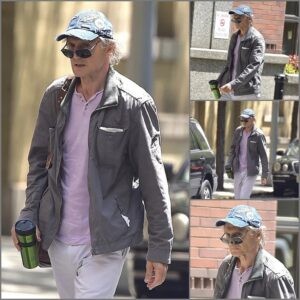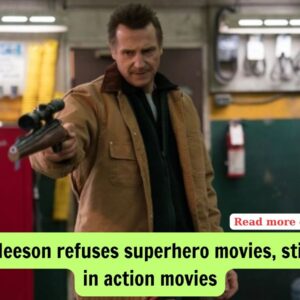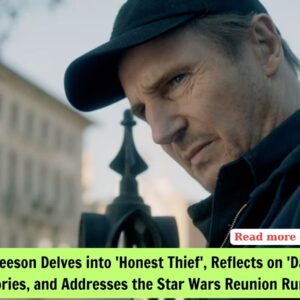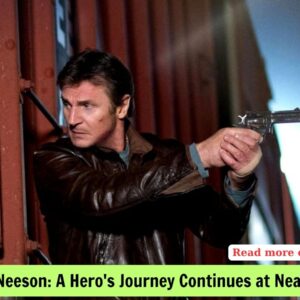Film does not offer convincing re-creation of noir aesthetic but worth making your own mind up about
:quality(70)/cloudfront-eu-central-1.images.arcpublishing.com/irishtimes/P5UZBDUZVNYKHZ4U4LJHUBT3T4.jpg)
You could easily fool yourself into thinking that Philip Marlowe is as unavoidable a presence on the big screen as Sherlock Holmes. But this is not so.
It is, astonishingly, 45 years since the last theatrically released film featuring Raymond Chandler’s sardonic private eye. Blame Michael Winner for (among other things) finishing Marlowe off in his famously execrable 1978 version of The Big Sleep.
We may end up waiting the full half-century for another adaptation of a Chandler novel. Neil Jordan’s peculiar film casts Liam Neeson as a – let’s be polite – more experienced incarnation in this take on The Black-Eyed Blonde, John Banville’s skilfully ventriloquised Chandler follow-up.
The film offers neither a convincing re-creation of the noir aesthetic nor the sort of bold deconstruction we might expect from the Jordan of Mona Lisa and The Good Thief.
There are, to be fair, hints of the latter in later scenes, lit now in pervasive sapphire, now in traffic-light red, that bring us among a sordid underworld closer to James Ellroy. Seána Kerslake, as a sassy actor, gets to deliver strong dialogue with one eye theatrically made up after finishing a violent scene.
But, for most of its duration, Marlowe (screening on Sky and in a few cinemas) trades in the flat tones of the TV movie. We all know Los Angeles is historically a Spanish city, but not quite enough remains of that heritage to justify shooting exteriors in Barcelona. A sickening yellow filter does something to exoticise the Dublin interiors.
[ The Black art of channelling Raymond Chandler ]
You hardly need to be told Marlowe begins with a brittle blonde entering the protagonist’s office to report a missing person. It is Diane Kruger as Clare Cavendish, and she wants Marlowe to locate her errant boyfriend, Nico Peterson (François Arnaud).
The cops are convinced he was killed outside a posh country club, but the gumshoe suspects somebody else’s ashes may be in the urn. Does he encounter more twists than a teenage dance in a pretzel factory (with apologies to Chandler and Banville)? Sort of.
Drugs are being smuggled in from Mexico. Something murky is afoot in the props department of a Hollywood studio. None of the knots, however, feel worth disentangling.
What Marlowe does have going for it is a game cast making, for the most part, something juicy of hard-boiled staples. Danny Huston is exactly the sort of person you’d expect to encounter in such a middle-stump affair, and, as the son of John Huston, he arrives trailed by welcome wisps of Chinatown’s poisonous air.
Jessica Lange, rubbing close enough to an Irish accent to graze the skin without drawing blood, does her absolute best – Fionnula Flanagan would be proud – with dialogue about brewing tea that is “strong enough to trot a mouse on”. Nobody is having quite such a blast as Alan Cumming, who gets to fully camp it up as flamboyant hoodlum Lou Hendricks.
Neeson himself is, however, stuck with a variation on Marlowe that doesn’t feel fully serviced. If your ageing-shamus bingo card has a square for the line “I’m getting too old for this” then you need to have pencil well sharpened.
The film does not do quite enough to accommodate an actor of Neeson’s vintage (even one in such good shape). When he asks a copper if his good work here will get him his “badge back” he doesn’t seem to be joking.
The un-Marlowesque outbreaks of bare-knuckle brutality – playing to Neeson’s 21st-century hard-man image – are, to put it kindly, choreographed for the less energetic detective.
Neeson is, of course, perfectly capable of chewing through the quips while carrying the city’s sins on his broad shoulders. But he needs more help from a rigid script to make sense of a character that seems defined by archetype alone.
Worth making your own mind up about. Probably not worth taking a journey to do so.
Marlowe opens March 17th
News
“Liam Neeson’s Surprise: Shocking Appearance Raises Eyebrows on the Street”
Liam Neeson, 63 years old, famous actor with a series of roles in action movies: “Taken”, “Non-stop”… appeared thin and haggard on the streets of New York…
“Liam Neeson on Embracing Action Roles at 70: ‘I’m Getting Away with It’”
Liam Neeson is looking back at becoming an unlikely action star with 2008’s Taken Liam Neeson’s age isn’t getting in the way of his status as an action…
Liam Neeson refuses superhero movies, still acts in action movies
Although Liam Neeson has no plans to star in any more superhero movies, he said he will continue to participate in action movies. (Photo: The Playlist) Liam…
“Liam Neeson Delves into ‘Honest Thief’, Reflects on ‘Darkman’ Memories, and Addresses the Star Wars Reunion Rumors”
He also reveals which of his films he’d love to have revisited with a sequel. From writer/director Mark Williams (co-creator of the Netflix series Ozark), the crime drama Honest Thief tells the…
Liam Neeson’s action thriller suffers due to predictable twists, rushed ending
Liam Neeson’s Retribution is strictly a one-time watch for action star’s fans. However, a few of them might get disheartened as well. Liam Neeson’s films of late…
“Is ‘Made In Italy’ Worth the Watch? Analyzing Liam Neeson’s Movie Reviews and Rotten Tomatoes Scores”
The Liam Neeson movie Made In Italy is currently proving surprisingly popular on Netflix, but is this largely forgotten 2020 dramedy worth watching? SUMMARY Made In Italy…
End of content
No more pages to load






